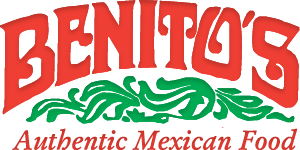Celebrating With Food: Traditional Mexican Dishes for Important Occasions
Traditional Mexican Dishes – The cuisine of Mexico is more than just food–according to UNESCO, it’s an “intangible cultural heritage of humanity.” There are many reasons for this: one is its importance in maintaining social relationships.
Mexico is famous for having a very family-oriented culture. In other cultures, one person cooks, and everyone else eats. Or, guests are tasked to bring a dish for a communal meal, such as in North American Thanksgiving celebrations. In Mexico, food preparation is a social activity, with family members and friends working together to whip up a delicious feast for everyone to enjoy.
Certain dishes are associated with festivals, feast days, and other important occasions. Mexicans eat most meals at home, surrounded by family, and celebrations aren’t complete without special dishes whose recipes have been passed down from generation to generation.
The followings are some important occasions in Mexico and the traditional dishes many families serve during them. Note that regional Mexican food may have variations depending on the history, climate, and customs of the area, as well as other factors.
Traditional Mexican Dishes:Día de los Muertos
Traditionally celebrated every year from October 31 to November 2, Día de Los Muertos, or Day of the Dead is a time for families to come together and pay their respects to their departed loved ones. Unlike All Saints’ Day and All Souls’ Day, Día de los Muertos is not a solemn event. Instead, it’s a merry celebration where the dead are the guests of honor.
Mexicans and the Mexican diaspora put out ofrendas or food offerings, usually tamales, for the deceased. They decorate altars with marigolds, candles, La Catrina figures, and edible ornaments–colorful Calaveras or sugar skulls.
Families get involved in preparing regional Mexican food, special dishes popular across the country, as well as traditional desserts and beverages for the occasion. These include:
Pan de Muerto
This is a sweet, soft bread often flavored with aniseed, lemon zest, or orange flower water. It has a round top, which in some traditions represents a grave. In others, it symbolizes the circle of life and death.
Each region of Mexico has its own take on pan de Muerto. Some decorate it with dough shaped like a skull on top of a cross shape made by dough sculpted into bone shapes. Other regions like Oaxaca paint it with food dyes and colored sugar. Bakers also make smaller versions of the bread in the form of animals, baskets, and dolls for children who have passed away.
Pan de Muerto is an important part of ofrendas. According to tradition, this bread nourishes the souls that return to the land of the living during Día de Los Muertos.
Mole Negro
Mole negro or black mole is traditionally served during Día de Los Muertos as well as other holidays. The dish is centuries old, originating from pre-Hispanic times. The word “mole” comes from the Nahuatl word for sauce, “molli.”
While Oaxaca has many types of moles, hence its nickname “The Land of Seven Moles,” mole negro is easily distinguishable thanks to its smoked flavor and very dark hue. Ingredients for this regional Mexican food include chocolate, hoja santa or Mexican pepper leaf, dried chiles, and almonds. It is widely considered the most difficult to prepare among Oaxacan moles.
Calabaza en Tacha
This traditional Mexican dessert is typically placed on altars for Día de Los Muertos and eaten as a snack or dessert. Like most dishes in the cuisine of Mexico, calabaza en Tacha has been around for centuries.
In Aztec times, it was made by sweetening pumpkin with agave sap. Today, it is prepared by simmering pumpkin in piloncillo or unrefined cane sugar and orange juice or zest along with cinnamon and other spices. The dish is ready to be served when the pumpkin has softened and a thick syrup has formed. It can be eaten on its own or with a topping of evaporated milk.
Atole
This thick and delicious drink is a comfort food for Mexican people. While it’s a traditional drink and offering for Día de Los Muertos, many people enjoy it year-round. However, it’s especially popular around the colder months because it’s warm, thick, and sweet.
Traditional atole is made from masa (corn dough) or masa harina (corn flour), which is toasted on a griddle before mixing with vanilla, cinnamon, and water. Some people use rice, wheat, barley, or oatmeal instead, and some recipes call for fruit, nuts, or additional spices. Combining atole with chocolate creates champurrado.
Noche Buena
The Christmas holidays are a very significant time in Mexico, consisting of not just one but multiple celebrations. These include:
- The Feast of the Virgin of Guadalupe on December 12
- Las Posadas from December 16 to 24
- Los Santos Inocentes on December 28
- New Year’s Eve
- Three Kings’ Day on January 5
- Candlemas on February 2
However, Christmas Eve is arguably the biggest and most important of these events. Unlike in North America, where people celebrate on December 25, in Mexico, families do so on the night before.
Christmas Eve, referred to as Noche Buena or “good night,” combines pre-Hispanic, indigenous culture with beliefs and traditions brought by Spanish priests in the 16th century. While there are regional variations, Noche Buena celebrations generally kick off with the final posada of the season. Children walk from house to house, singing “Las Posadas” and asking the residents to let them in, reenacting Joseph and Mary’s search for shelter before Jesus’ birth.
Afterward, families go to misa de Gallo or midnight mass, then head home to enjoy their main Christmas meal.
Bacalao
This dish has distinctly Spanish origins. When the Spaniards colonized Mexico, they brought with them Catholicism and its customs. Because Spanish Catholics could not eat meat on Fridays during Lent and during Semana Santa or Holy Week, they ate seafood instead, as fish were not considered meat.
Codfish was an ideal alternative to meat because drying and salting it retained its nutrients and preserved it, and it tasted good once rehydrated.
The Basque version of Bacalao, Bacalao a la Vizcaina, is the kind most commonly consumed during Christmas dinner. Ingredients for this dish include those not usually found in indigenous Mexican cuisines, such as capers and olives. The version known and loved by Mexicans today is served in a tomato-based red sauce.
Romeritos con Mole
Originating from Central Mexico, romeritos con mole has as its main ingredient the romerito plant, or seepweed. Romeritos resemble rosemary but are very different in taste, aroma, and application. They have grown since before the Spanish conquerors arrived.
Romeritos con mole requires a lot of work to prepare. The tender leaves have to be removed from the woody stems and picked over. Damaged and discolored leaves must be removed and the remaining ones washed several times to get rid of dirt and sand. Only then can one begin cooking the romeritos and preparing the mole.
Another version, Revoltijo de Romerito, is even more challenging and time-consuming to make, as well as more expensive. Apart from cooked romeritos, it features shrimp pancakes, nopalitos or cactus, potatoes, and mole served over a bed of white rice or with bread.
Celebrate Happy Moments With Traditional Mexican Dishes at Benito’s
The cuisine of Mexico is famous worldwide for its unique combination of ingredients from the Old and New Worlds, resulting in delicious flavors and textures, as well as the cultural importance attached to each dish. When you eat authentic Mexican food, you’re taking part in centuries-long culinary traditions as well as delighting your palate.
Benito’s Restaurant proudly serves authentic, made-from-scratch Mexican dishes. To book a table for a celebration with loved ones, call us at (817) 332-8633.






